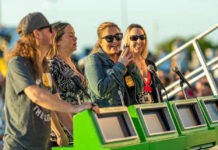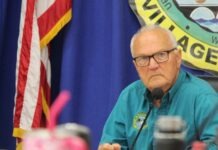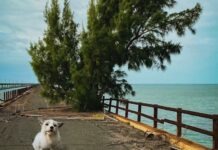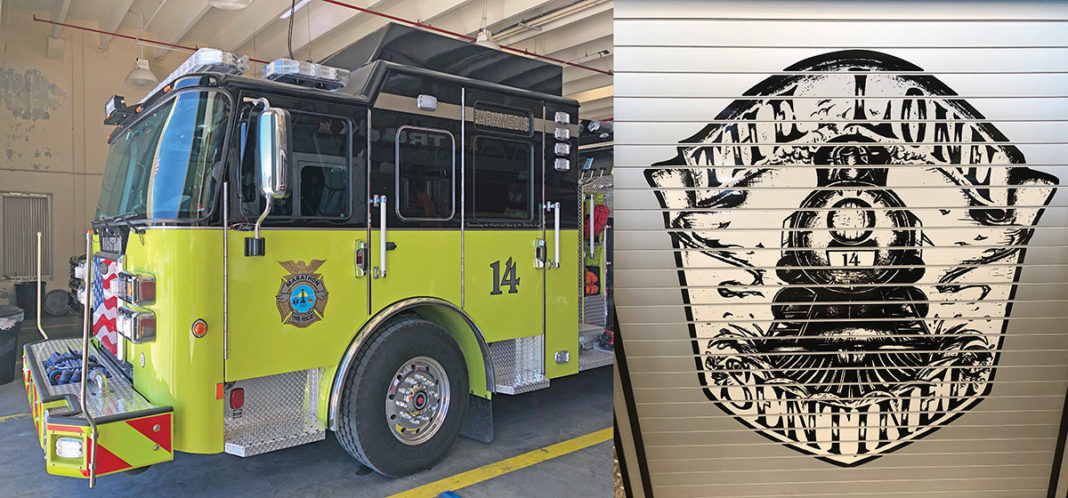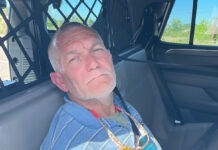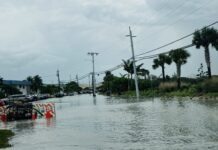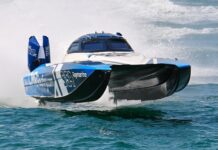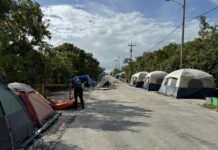The City of Marathon Fire Rescue recently added a new “truck” to the fleet. Engine No. 14 joins Ladder No. 14, Tanker No. 14 and Engine No. 15, which will be transferred to Grassy Key as soon as some updates are made.
“This is a replacement apparatus for us,” said Chief John Johnson. “For the next 10 years it will be our front, or lead vehicle, and then we will continue to use it for another five years as a secondary vehicle. Ladder No. 14 is now our backup vehicle, which is important to have in case one needs maintenance.”
Johnson said the other engines and ladder trucks could last as long as 20 years simply because they’re not run as much. (By comparison, the rescue ambulances only last 7 years, and the inter-facility transport ambulance only 4 to 5 years.)
“This is really a high-tech vehicle,” said paramedic firefighter Mario Macias, who hopes to pass his driver/engineer test soon.
“And because it’s ALS rated, Advanced Life Support, this new engine can handle any emergency. It has the same equipment as an ambulance; the only thing it doesn’t have is room for the stretcher and the patient,” said Deputy Chief Eric Dunford.
Here are the specs:
- Manufacturer: Pierce
- Cost: about $560,000
- Top speed: 65 mph
- Passengers: 4 firefighters
- Gallons per minute: 1,260
- Water storage: 750 gallons
- Foam storage: 30 gallons
- Hose: There’s about 2,700 feet of hose on the truck in different widths, all color coded for easy reference.
- ALS rating: This fire engine carries the same equipment and medications as a city ambulance. The only thing it doesn’t have is room for a patient.
- The Mermaid: The engine has a small, built-in cooler for medications. (Plus, there’s a snack fridge!)
- Catwalks & fold-out steps: The catwalk is designed to give firefighters a good view of the action, but also remove them from the road for safety when operating or retrieving equipment. The fold-out steps allow access to the top of the truck.
- Lights: The truck is equipped with LED features that are able to run off the truck’s engine, rather than employing a stand-alone generator (although the truck carries one of those, too). The lights in the back can be used as traffic indicators, the ones on the side indicate the amount of water left in the tank.
- It is tradition in the fire service for each station to have its own name and patch. Station 14’s logo — The Lone Sentinel — is designed and drawn by Marathon firefighters; it depicts the train that responded unaided during the Labor day Hurricane of 1935 as they, too, served unaided as did the Marathon crew immediately following Hurricane Irma in 2018.

